How much food do you throw away every year? 240 pounds, based on research. That’s a huge burden on the environment, and your wallet, too.
Think about it: you paid money for that waste and brought it to your home. It would be much smarter to keep the money and use it for things like travel, education, or save for a rainy day.
You can avoid food waste by making a few simple lifestyle changes.
Why should I care about food waste in my kitchen?
That’s a great question! We live in an abundance of food, and some of us would be better off with a little less of it. You won’t do any harm if you throw some of the excess food out, right? You may want to reconsider.
Help yourself: more money in your pocket
Food costs money. When you throw away food, you’re throwing away your money.
American families throw away about a quarter of the food they buy, writes Jonathan Bloom in his book American Wasteland.
According to the book, a family of four will throw away food worth between $1,365 to $2,275 per year. And this doesn’t include the cost of energy used for cooking that wasted food.
Some of us are worse than others when it comes to spending money on food.
Six months ago I decided to track our monthly food expenses, for a family of three. We were shocked to find out that our food spending was between $1,600 and $2,000 per month!
We were eating out several times a week. We didn’t do any meal planning, and were grocery shopping 3–4 times a week. Groceries included a lot of organic produce, as well as prepared foods.
The worst part was that the majority of that expensive organic produce ended up in the trash can.
After months of active meal planning, we trimmed the weekly spending down to $200. This included both groceries and restaurants. Our monthly expenses reduced from $1,600 to $800. It adds up to $9,600 worth of savings per year!
Help the world: give your children a better future
It’s only human to focus on the present moment, on your immediate troubles and worries. You have many things on your plate that ask for your attention.
But if “now” is not the right time to think long term, then when?
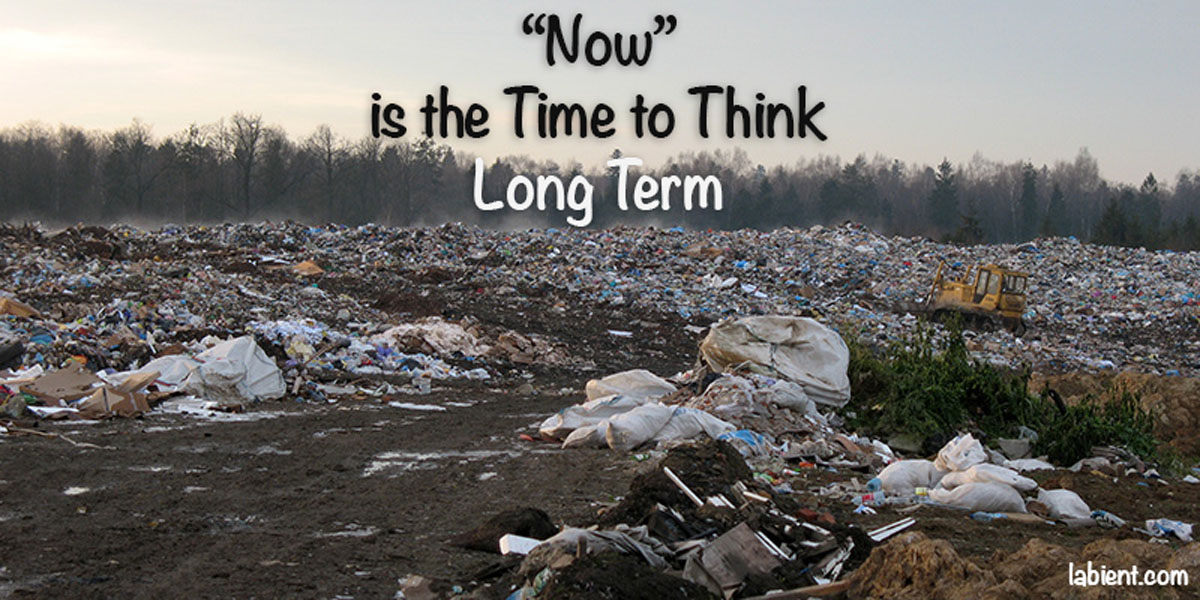
You and I know that our current lifestyle is detrimental to the environment. You’ve heard all the stories about environmental pollution and toxins.
Food is the single largest component of municipal solid waste going to landfills. It accounts for over 20% by weight. Food waste quickly generates methane, a greenhouse gas 21 times more potent than carbon dioxide.
According to a study published by FAO, a third of the food produced in the world gets lost or wasted. That’s about 1.3 billion tones. This is a huge waste of energy and resources, that we could spend elsewhere.
If you are like most of us, you may think: it doesn’t matter what I do, my actions will never make a big enough impact. But I want to ask you to do it for the only person that matters: yourself.

It doesn’t matter if your efforts will go unnoticed. The important part here is that you will live with a clean consciousness. You will know deep inside that you have done everything in your power. You will know that you don’t carry the responsibility for polluting the planet.
The feeling of satisfaction you will receive is unbelievable. Don’t do it for anyone else: do it for yourself and for the future of your children.
So how do you get started with reducing your food waste? Follow these steps:
Find your food waste patterns
To reduce your food waste, you need to understand what kind of waste your kitchen is generating. Everybody’s eating habits are different, and your solution will depend on your personal situation.
The first step is to analyze your, pardon me, trash. You need to know what goes into that garbage can to start your waste elimination efforts.
In our house, we have been separating the food scraps from the rest of the garbage for a while. The reason was that the garbage was picked up only twice a week, and we didn’t want a stinky trash can in our house.
We kept the food waste in a small bag, in the freezer, and took it out on the days the garbage truck came.
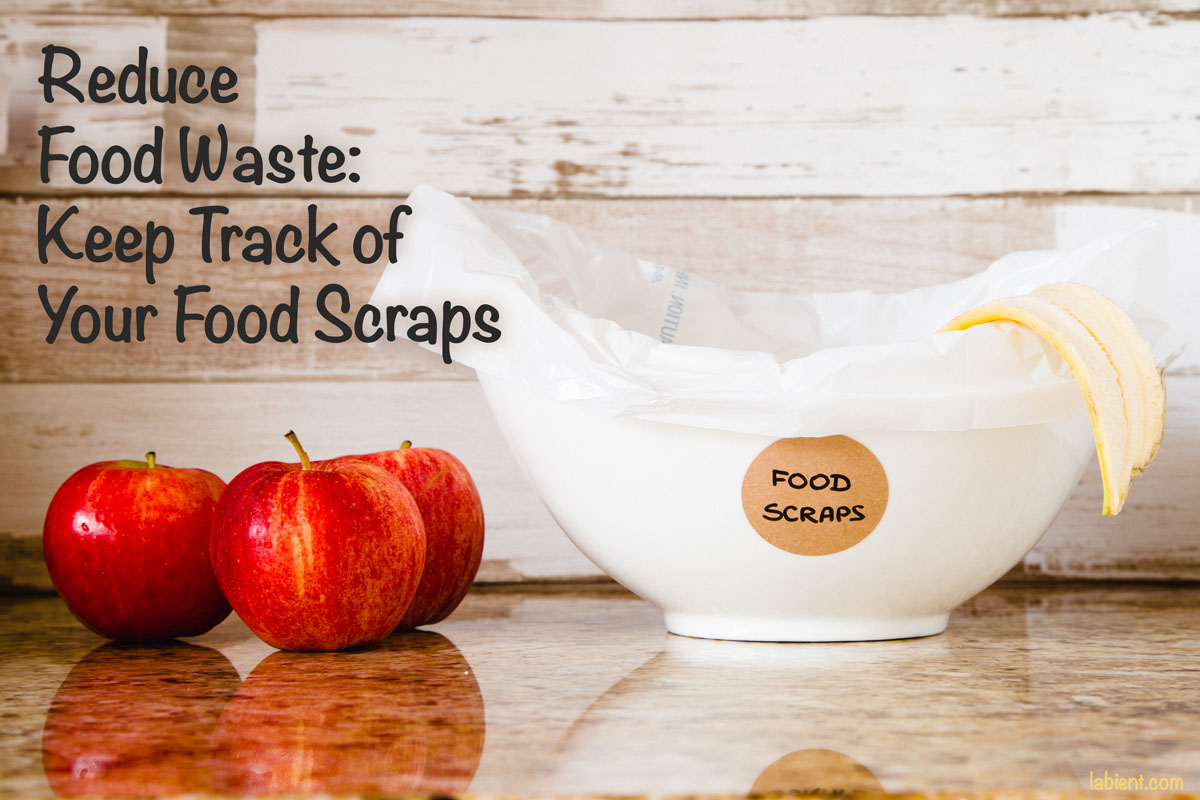
If you are not already separating your food scraps from the rest of your trash, start doing it now. It will make it easier to see what foods you throw away when they are not mixed up with the rest of your garbage. Don’t put food packaging or other items there: only food.
I keep a small bucket on the counter, and use it to collect the food scraps during the day. Then, in the evening, I empty the bucket into a trash bag and put it in the freezer.
Once you have your bucket setup, start paying attention to what you are putting in there. Do it for several days, and you will start noticing patterns. For our family, the patterns look like this:
- Fruit and vegetable peels
- Spoiled fruits and vegetables
- Bones, skins and fat from animal products
- Food leftovers (uneaten foods)
- Coffee grounds, used tea leaves
- Foods that have gone bad in the fridge, like old yogurts, cheeses etc.
As you start noticing the patterns, it will kick off some ideas on what you could do to reduce the waste. That’s exactly what we want happening here.
Meal Plan
The best way to reduce food waste is to not bring it into your home in the first place.
When you buy more food than you can eat, or you buy things that you can’t combine into a meal, they end up being left unused. Eventually they go bad and you throw them away.
To fix this problem, nothing beats a good meal planning routine. Meal planning means that you plan what you are going to eat in advance, usually once per week.

You create a shopping list based on that plan, and buy only the items on the shopping list in the grocery store.
On top of helping you to reduce your food waste, meal planning has more advantages:
- You will eat healthier. The worst time to start thinking about what’s for dinner is when you are on your way home from work, tired and hungry.At that time, you will most likely buy something quick and unhealthy. You may even end up getting a takeaway or going out.But, if you have planned your dinner in advance, and have all the ingredients at home, you will resist the temptation and cook a healthy home meal.
- You will save a lot of money on groceries. Food is a large expense in your budget. But, unlike things like mortgage payments, it is an expense that you have full control over.As I mentioned earlier, my family was able to reduce our food spending by $10K per year. It’s money that I would rather spend on experiences or invest in our future, instead of throwing in the garbage.
So how can you start with meal planning?
Step 1: Decide on a weekday for grocery shopping.
 Think about your weekly schedule, and see what day will work best for you. Try to schedule it on a day when you don’t have much going on.
Think about your weekly schedule, and see what day will work best for you. Try to schedule it on a day when you don’t have much going on.
Maybe you have a dedicated day for taking care of your house, like doing laundry, cleaning, etc. This may be a good day to do your weekly grocery shopping.
You will need to spend some time to sort your groceries when you bring them home. You can wash your fruits and vegetables, and put things away into the refrigerator and pantry.
I also take the opportunity to throw away any old foods and give the inside of the refrigerator a quick wipe down.
Step 2: Shop your refrigerator first
Take a quick inventory of what foods you already have in your fridge and pantry. Plan your meals based on them.
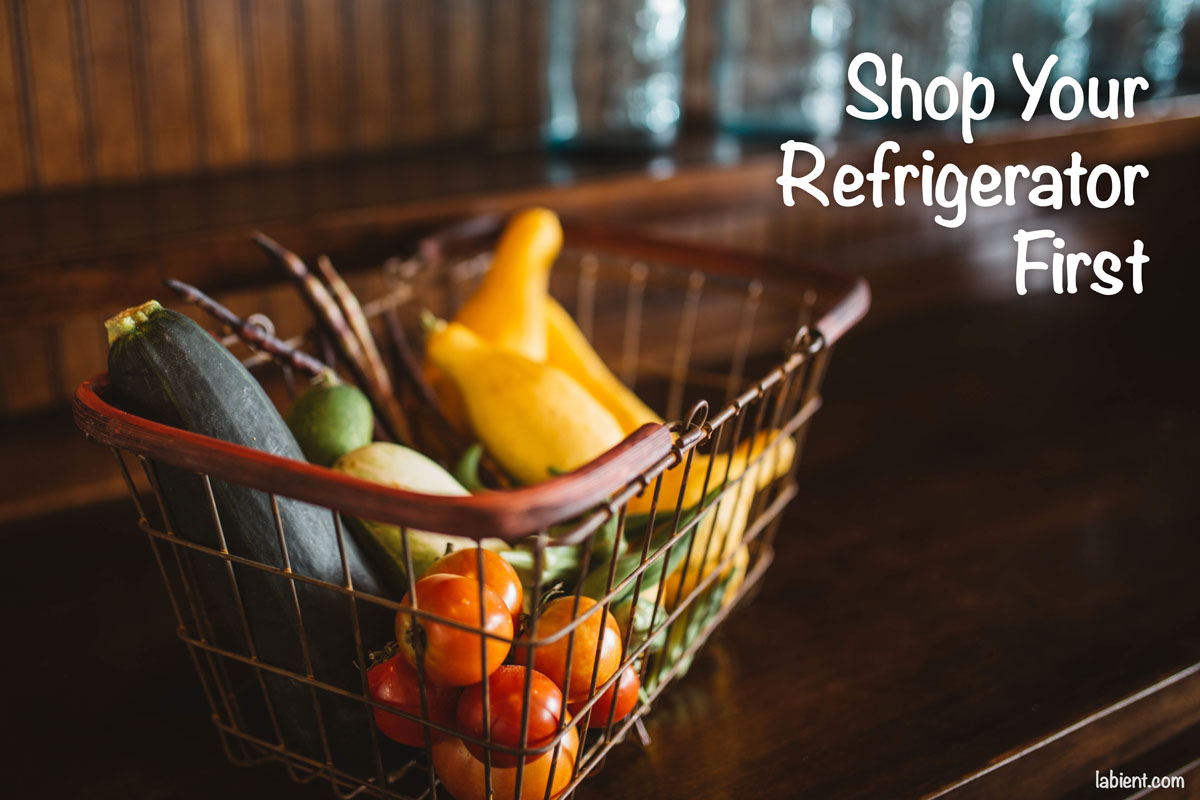
A lot of times, we forget what foods we have in the fridge, and end up not using them on time and having to throw them away.
A quick clean up of the refrigerator can help you discover the “hidden treasures”. Your fridge will be less full at that time, which will make it easier to clean. Usually I do a quick wipe down of the shelves, while moving things around in the fridge.
Step 3: Get over the expiration date confusion
Can you eat foods after their “best by” label date? It may surprise you, but the “best by” label doesn’t mean that the food is unsafe to eat after that date.
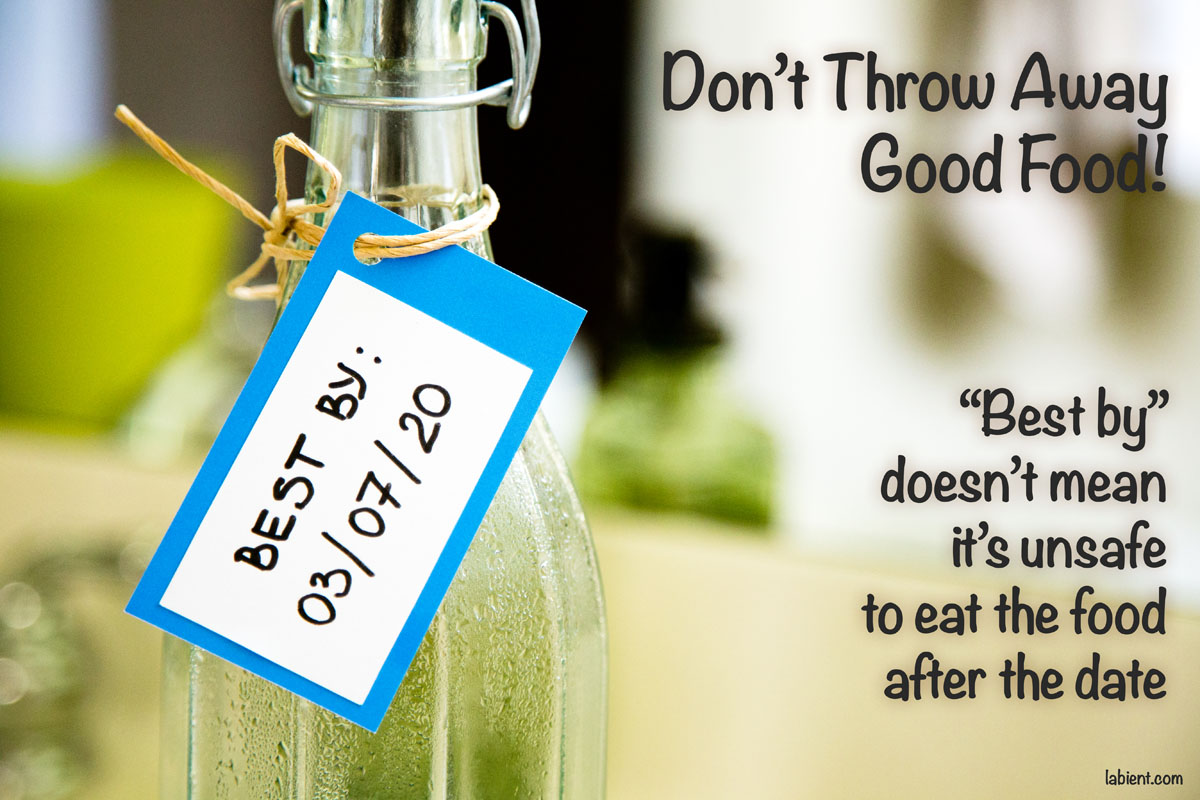
The “best by” and “use by” labels are the manufacturer’s suggestion for peak quality. It means that the food is the freshest and best tasting if consumed before the date. It doesn’t mean that the food is unsafe to eat after it reaches the expiration date.
Most of the label dates are not regulated by the government.
An unopened package of yogurt may be just fine after its “best by” date, if stored in a cold refrigerator.
On the other hand, sometimes I bring home a box of strawberries and find that half of them are moldy.
Instead of blindly following the date written on the package, handle your food with care and trust your common sense.
Step 4: Don’t serve more than you can eat
Are your eyes bigger than your stomach?
The dinner is over, and the family members head to the trash bin to scrape the plates clean from the food rests. Sounds like your family? Well, this is rather wasteful, isn’t it?
Did you know that an average American throws away 10 times more food than an average Asian? A 1987 study found that people over 65, who lived through the Great Depression or World War II, wasted half as much food as the younger generations. This shows that food waste is something that we can avoid.
The first step is to become aware that you are preparing larger portions. Next, start to reduce the size of your portions. Maybe switch to smaller plates.
What’s the worst thing that can happen? You may leave the table still feeling a little hungry. But in most cases, you will feel much better because you didn’t overeat. This may lead to a welcome weight reduction and other health benefits.
Step 5: Create your meal plan & shopping list
If you are new to meal planning, I recommend to keep it simple in the beginning. You don’t need to come up with a new meal for every day of the week.
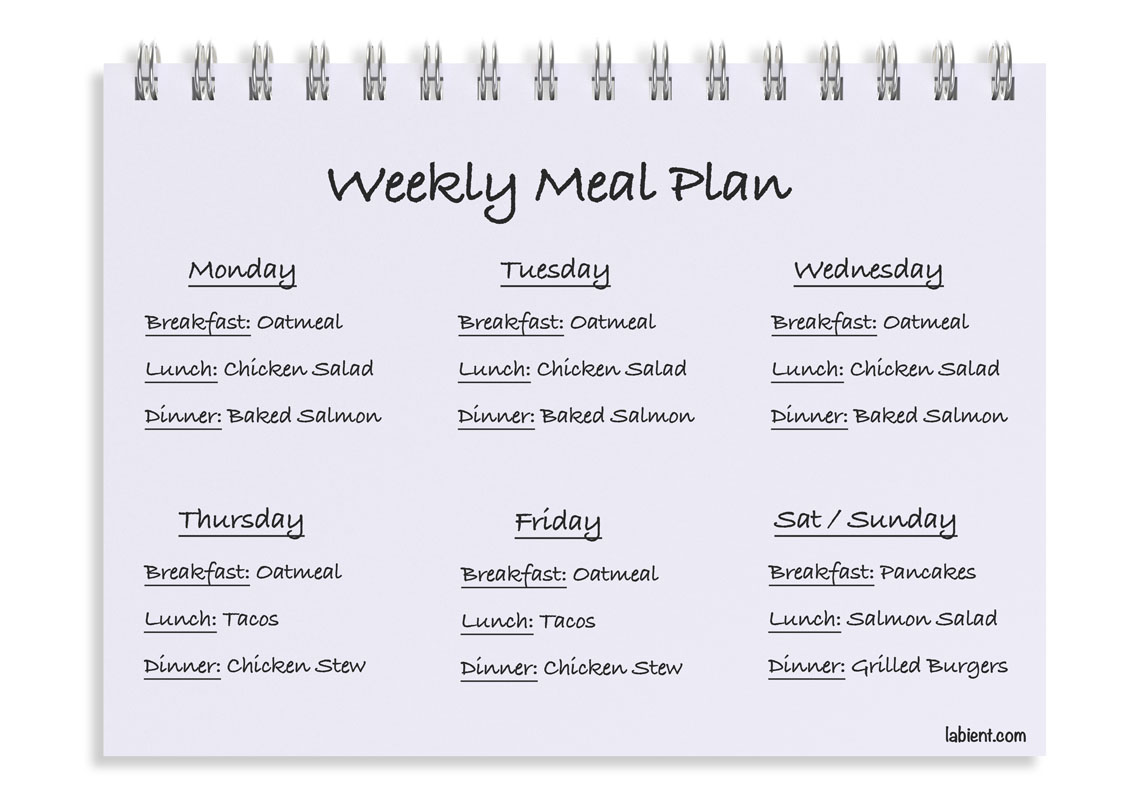
You may be used to buying prepared foods or going out for dinner. In this case, the change to cooking all your meals at home can be overwhelming.
Plan simple and quick recipes
Instead, try to plan smart and schedule easy to make recipes for the days when you will not have much time to cook. If you are working a regular 9 to 5 work week, plan simple meals for the work days.
It can be something that takes no more than 30 minutes to prepare. You can also prepare things in advance. Then, you can make something more exciting on the weekend.
Cook for several days in advance
Another way to simplify your meal prep routine is to cook for several days in advance. It takes almost the same amount of time to cook for one meal and for several meals. You may need to do some extra chopping and use a larger pot, but that’s about it.
The advantage is that you don’t need to cook every single day, which makes the whole process way easier.
In my family, we do two cooking sessions during the work week, and one for the weekend. This reduces the meal prepping from 7 days a week to 3 days a week. Much better.
Step 6: Avoid impulse bulk shopping
Stores are trying hard to provoke you to make impulse purchases. It may be a bulk item that will seem like a “saving” at first. It will end up sitting in your pantry and get spoiled before you can use it.
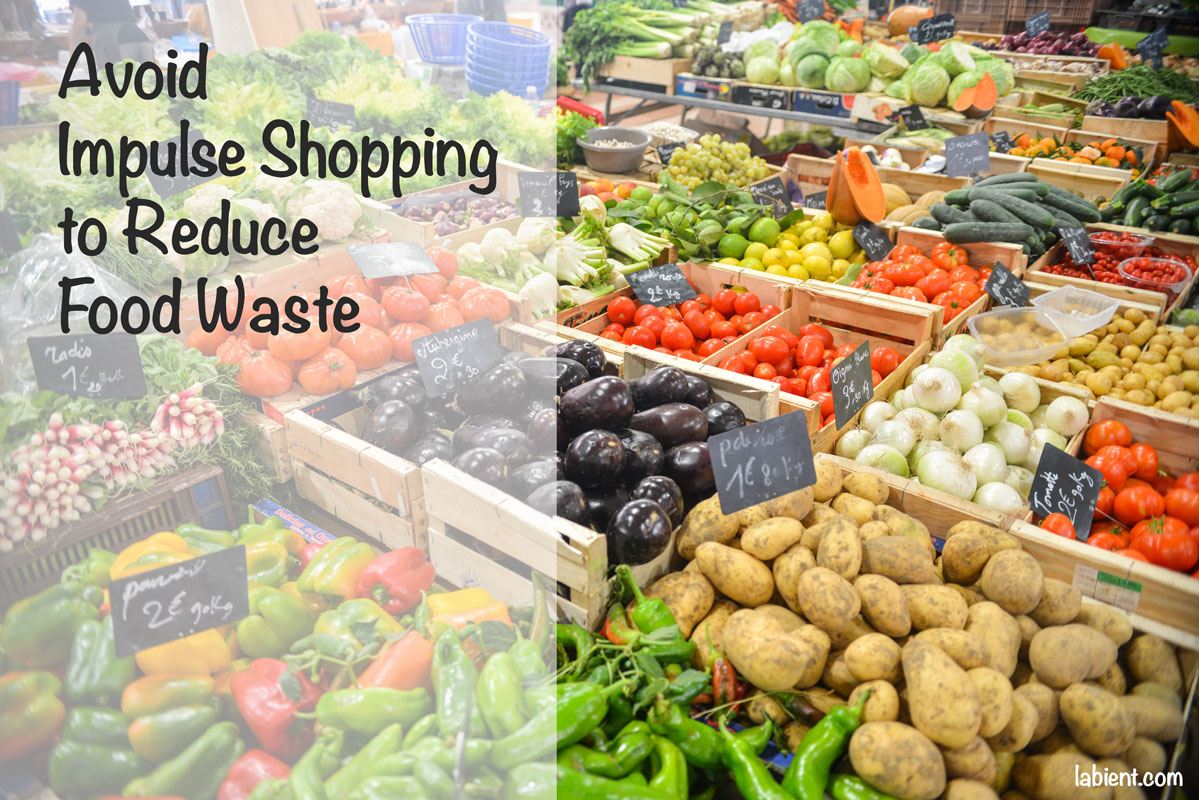
Impulse purchases is another risk zone. You may see something in the store that you get excited about. But, this item doesn’t fit into your meal plan for that week. You will end up not using it and throwing it away.
Make a pact with yourself that when you get to the store, you will only buy things from your shopping list.
Have an “Eat Now” box
You may have foods in your kitchen that will be expiring in a few days.
Bananas and avocados are two prime examples: you only have a window of a few days when they are ripe and ready. Once you miss that window of opportunity they will be gone.
Most of fruits and vegetables continue to ripen after harvest. The ripening process continues in your kitchen.
You need to make sure that you consume the ripe foods at the right moment, before they go bad. Separate those ripe fruits and veggies from the rest, and put them in a separate container.
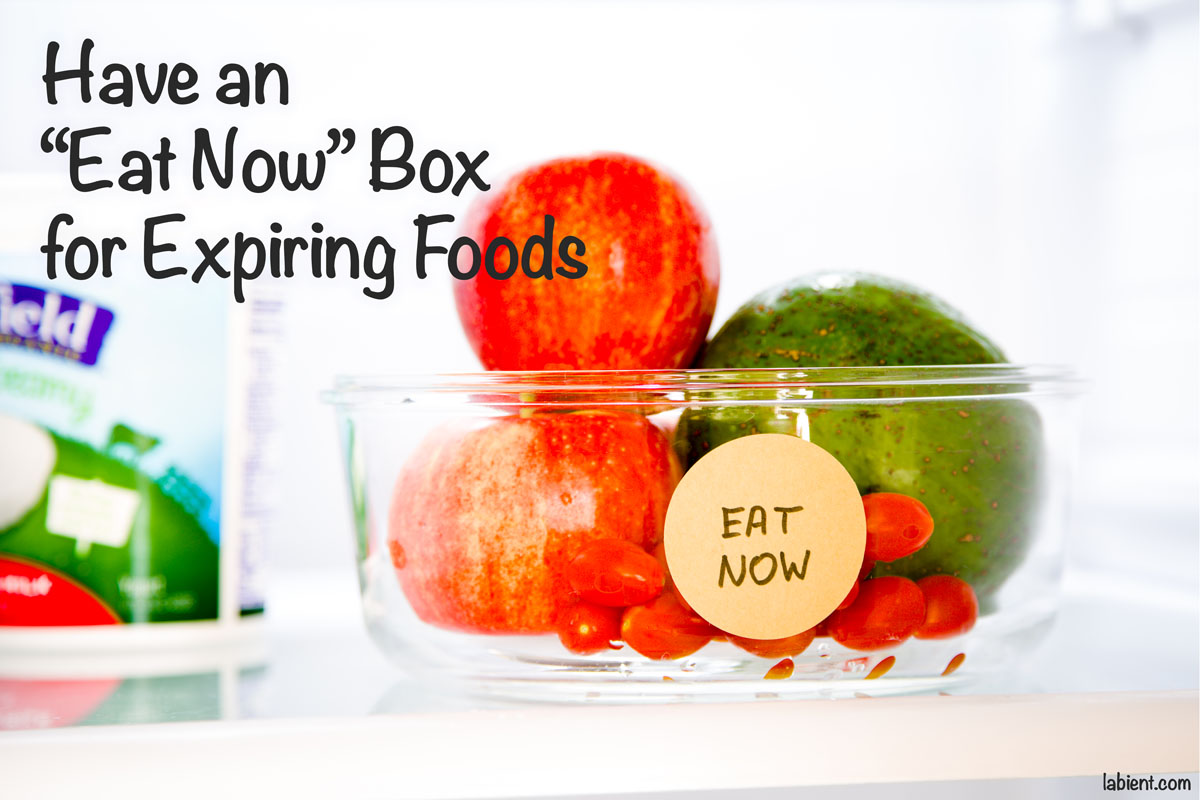
For example, you can select a small fruit bowl to keep all the ripe fruit in.
You can do the same thing in your refrigerator: find a glass container and label it “Eat Now”. Place it in the prime location in your fridge and put all the things that you need to eat within a few days in there.
This method will make sure that you are not missing the expiration date of your foods. You will eat those foods instead of throwing them away.
Reduce the vegetable peels
Vegetable peels can create quite a lot of waste. By reducing the amount of vegetable peels, your will get more veggies for you buck. Also, you will get all the nutrients contained near the outer layer of the vegetables.
Conventionally grown produce contains pesticides. Most often, the pesticides accumulate in the skins of the fruits and veggies. In this case, you have no choice buy to cut them off. We don’t want to eat the pesticides.
Try buying organic produce, or from a farmer that doesn’t use harmful pesticides.
The best way to reduce the amount of peels is to eat the vegetables whole, with the skins. For example, you can bake potatoes and eat the crunchy skins.
If you don’t like to eat the skins, try to not cut too much of the good parts of the veggie with the peel. Try using a vegetable peeler that will help you cut thinner layers of the skin.
Better yet, invest in a vegetable brush. It will help you scrub off a thin layer of the outer skin of the vegetable.
Reuse foods in other meals
The ultimate goal of reducing food waste is to have a household that doesn’t produce any waste at all. It’s called a “zero-waste home”.
To achieve this, you need to work on using all parts of the foods that you bring into your home. Here are some strategies that can help you get started:
- Make a vegetable broth from vegetable peels
- Make a bone stock from bones
- Put veggies that are starting to loose their freshness into a stew
- Use coffee grounds as a face and body scrub
Freeze
Life can be unpredictable, and you may miss a day or two of your planned meals.
You may end up dining out instead of preparing a home-cooked meal. Or you get home late and make scrambled eggs for dinner. It happens to everyone, and there is no need to beat yourself up for that: adjust and move on.
If you are not able to prepare the foods that you bought, inspect your fridge and reassess the situation. See if any of the fresh foods will expire if not prepared on that same day.
For example, ground beef will not survive in your fridge for more than a few days.
If you find yourself in the situation when you cannot consume the food on time, consider freezing it. If you freeze the food before it goes bad, you will be able to reuse it in another meal a few days later.
Compost food scraps
No matter how careful you are with reusing every part of your foods, you will end up with food scraps anyway.
If you follow the steps above, you will be able to cut the majority of your food waste.
It is much better for the environment to compost those food scraps than throw them into the garbage.
Food in landfills decomposes and creates methane. Methane is a gas that is dangerous for the ozone layer.

Composting is a method that our Mother Nature is using to take care of organic matter. This method is safe and the end product is a wonderful fertile soil.
So how can you get started with composting?
First, decide if you want to compost yourself or use an external composting service. You may be lucky to live in a community that offers curbside composting. Or you may have a farm nearby who will accept your food scraps.
If nothing is available, you will have no choice but to get started with your own composting. Depending on your living situation, you will have different composting options available. Some of the options are:
- Cold composting
- Hot composting
- Worm bin composting
You will need to do some research to find out which method will work best for your personal situation.
Take it slow
It will take some time before you have adjusted your household to generate zero food waste.
In the beginning, you will feel enthusiastic and motivated. You may expect to become a zero waste home overnight. This may lead to frustration when you notice that you are still creating waste.
Accepting that this is a slow and gradual process will make the transition easier. Don’t stress and beat yourself up if you fail to follow your new routine. Sometimes we tend to give up on ourselves and think that we will never be able to change.
If you relax and fall back into your old routine, the first step is to acknowledge what happened. Tell yourself that it’s OK. Then, start over.
Just think about it: we are talking about a lifestyle change that will affect the rest of your life. It will also affect the life of your children and people close to you.
A few missed days is nothing compared to the major change that your actions will generate in the long run.
Keep things in the right perspective: you are making the world a better place.
Update: Read a follow-up article about how to make your whole kitchen waste-free, which goes beyond the food waste.
Have you tried any of the steps above? Do you have any other tips for how to reduce the food waste? Please leave a comment: I would love to hear your story.
Other articles from the zero-waste series:

